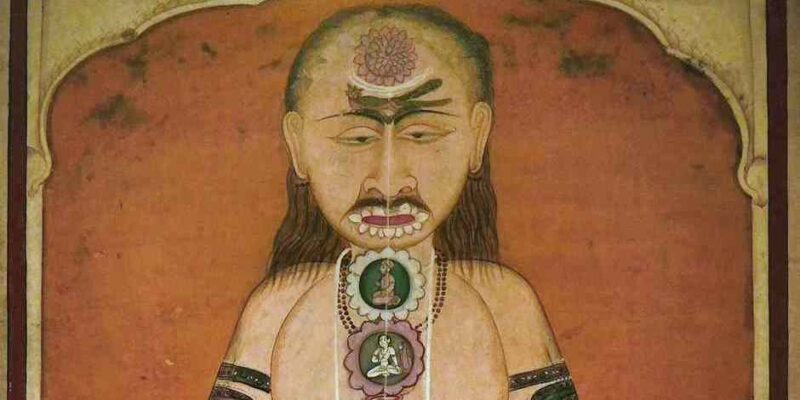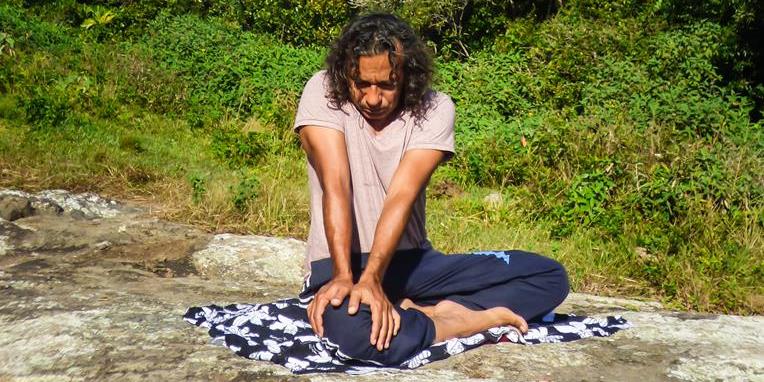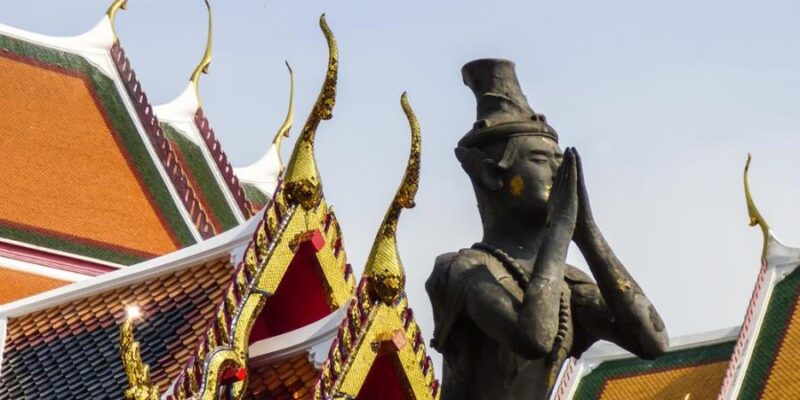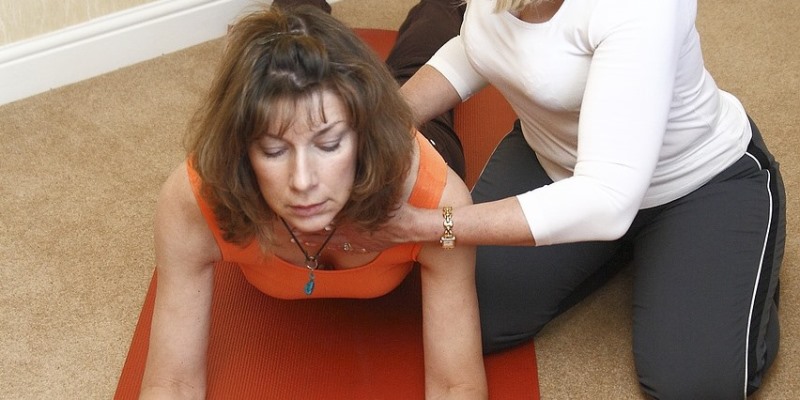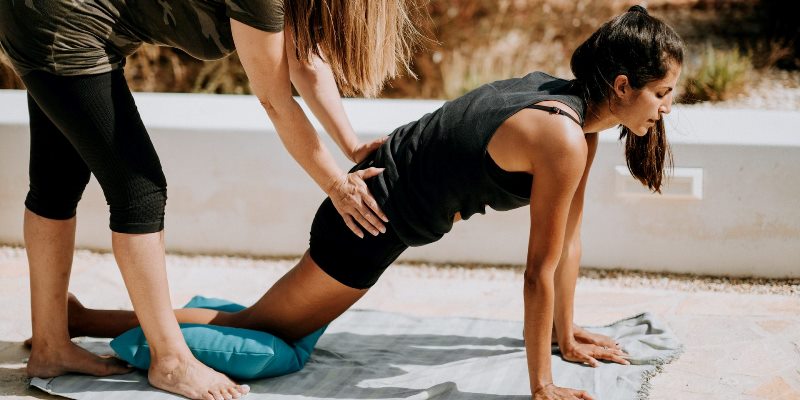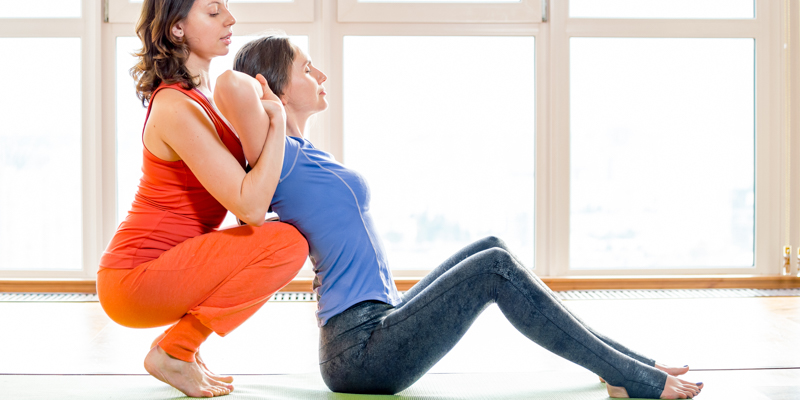
Combining and integrating Yoga and Massage Therapy is an ancient practice, perhaps Traditional Thai Massage (or Thai Yoga Massage) being the foremost example of a deep integration of these two modalities.
In general, Yoga and massage are blended in a variety of ways: sometimes a massage session is given followed by Yoga exercises, sometimes it’s the other way around, in other cases a session consists of continually alternating between massage and Yoga techniques, or even applying Yoga and massage techniques simultaneously, such as giving acupressure while a receiver has assumed a certain Yoga Asana.
Similarities between Yoga and Massage
Some massage techniques have been used in Yoga practices for already a long time. Think of Bandhas (Yogic muscle locks), abdominal massage techniques, upper body twists, and other sustained muscle contractions and pressing mechanisms, actually also making Yoga a type of Self-Massage, notably for the internal organs.

In fact, both Yoga and a range of traditional massage treatment modalities use quite similar techniques, such as breathing exercises, pressure, acupressure, meditation, visualizations, chants, sound, or incantations. Moreover, both disciplines share many of the same health benefits, of which we will talk further on, in the next section of this post.
Another similarity is that, in certain cases, the conceptual foundations of Yoga and traditional massage modalities (such as, for instance, Thai Massage) are quite similar, that is, being Vital Life Energy (Prana) based, while addressing Energy Channels, Acupressure points, and the Chakras.
In any case, in past years we’ve seen an impressive growth of massage therapists who have ventured into using Yoga techniques into their sessions, and by contrast, Yoga practitioners who bring in massage techniques into their Yoga sessions.
Applications and Benefits of Combining Yoga and Massage
Both Yoga and massage practices detoxify and oxygenate the body, promote our blood circulation, can increase flexibility and more range of motion, increase body awareness, can address similar health conditions, and both are used to achieve stress and anxiety relief, deep relaxation, more vitality, and general wellbeing.
Having said that about the general benefits, let’s now take a more detailed look at how massage and Yoga sessions and/or the techniques are combined i.e. blended.
Yoga Techniques in Massage Sessions
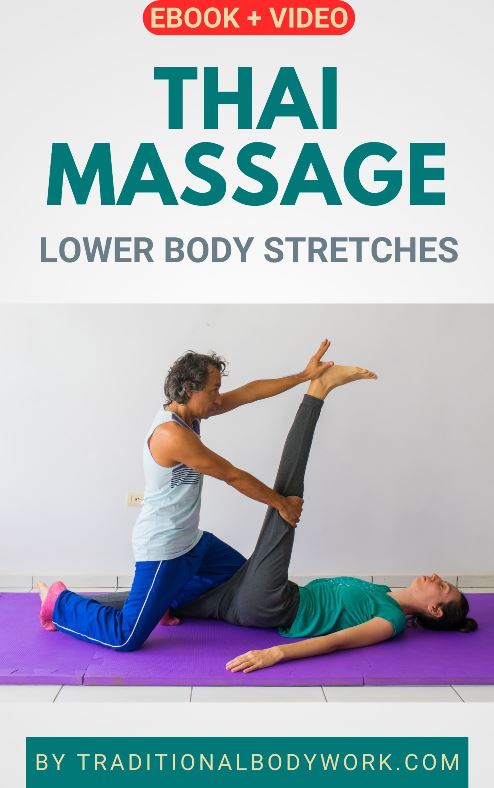
Typically, the Yogic part of a massage treatment session will consist of assisted Asanas (Yoga poses) and other assisted stretches. Sometimes also Pranayama breathwork, mantras, meditation, and/or visualizations are brought into a session.
The goal of using Yoga exercises (typically Asanas i.e. Yoga poses) into a massage session is to enhance massage work that was focused on dissolving, eliminating or loosening up adhesions, knots, tangles, and contracted body tissues by using sustained and assisted Yogic stretches.
Doing so, the muscles, tendons and joints of the receiver are further elongated, thus promoting better clearing of obstructions, while increasing blood circulation. Mind that Yogic stretches can be applied during a massage session, but also after a massage session has ended.
Massage Techniques in Yoga Sessions
Using massage techniques in Yoga sessions, notably while a receiver has assumed a Yoga Asana, can have certain benefits.
For instance, it can help the receiver to go deeper into an Asana by softening or pressing muscles and tendons, thus reaping more health benefits from the pose. Or, while the receiver is in an Asana, the therapists gives acupressure on certain Energy Channels or Acupressure points to achieve more, or specific health benefits. Moreover, the application of massage techniques in so-called Restorative Yoga (Yoga as Therapy) has become increasingly popular.
Massage can also be used before a Yoga session as a warm-up and to increase blood circulation to be able to better carry out Yoga exercises and Yoga Asanas. By contrast, a massage session can also be given after a Yoga training to help relax the body and recover faster from a vigorous exercise session.
Yoga for Massage Practitioners
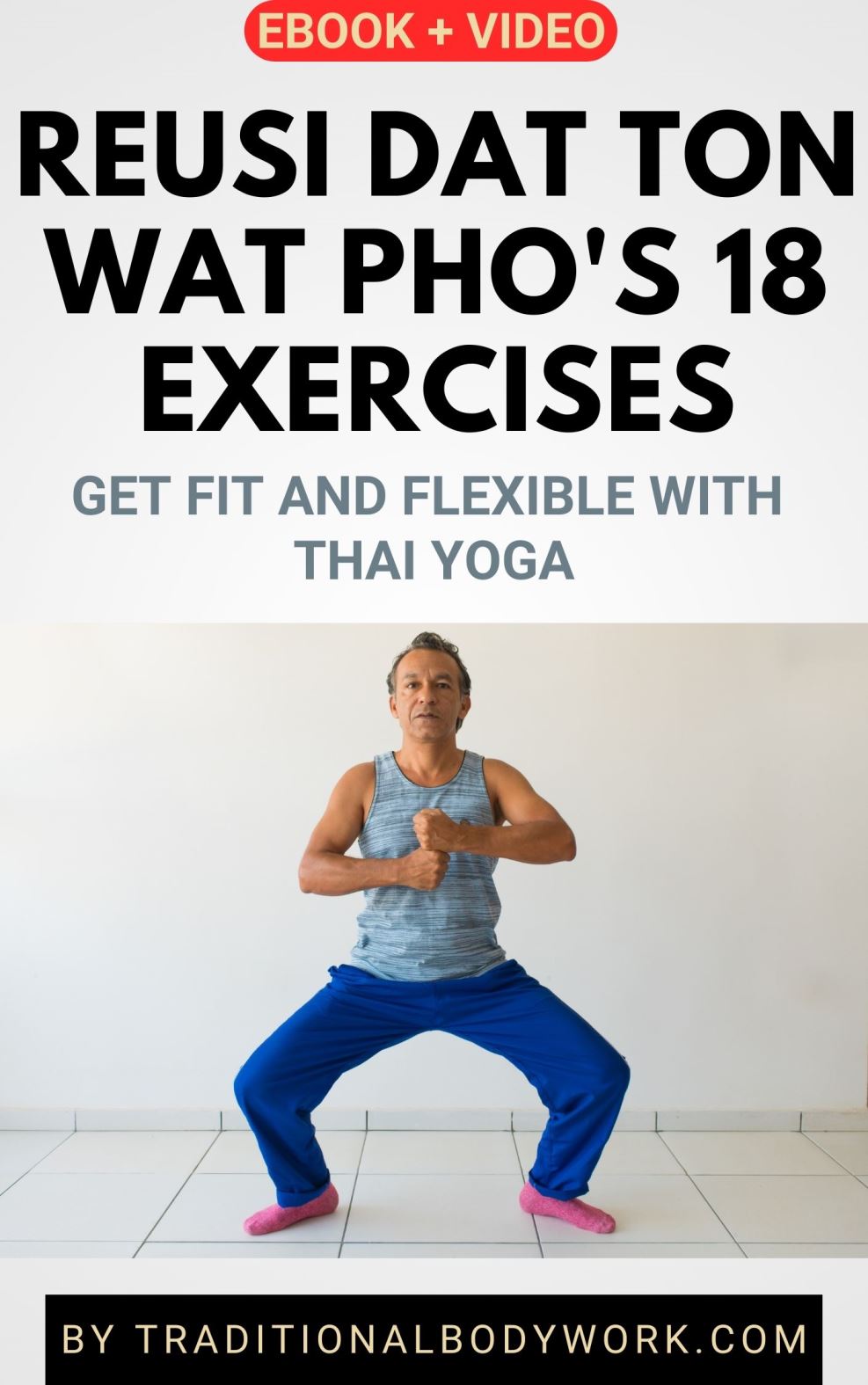
Yoga exercises can be a good “compensator” for massage therapists. As it is, massage practitioners use quite some strength, their work is often dynamic and repetitive, and over time muscles become tensed, contracted and shortened. It’s also not uncommon that therapists use working positions which are detrimental for their (lower) back, legs, neck and shoulders.
In fact, masseurs do become stronger, but often also stiffer i.e. less flexible, with all sorts of health issues arising from that, such as pains in the back, hands, arms, and shoulders, and a poor blood circulation.
Yoga exercises and Asanas can help practitioners to calm down and relax by counteracting the dynamic aspect of giving massage therapy, while also elongating muscles and tendons. Moreover, apart from always giving to the client, a massage therapist now gives something back to him or herself.
Massage for Yoga Practitioners
Those who practice Yoga cannot always stretch themselves to their maximum range of motions or cannot assume a Yoga Asana properly due to certain physical obstructions like, for instance, contracted body tissues, tensions, adhesions, knots, tangles, and such.
Regular massage sessions for Yogis can greatly enhance their physical Yoga practice by resolving the aforementioned impediments. By the way, these types of massages needn’t necessarily be Yoga Massage treatment modalities (such as Thai Yoga Massage). Any massage modality that can properly address releasing physical blockages will do.






